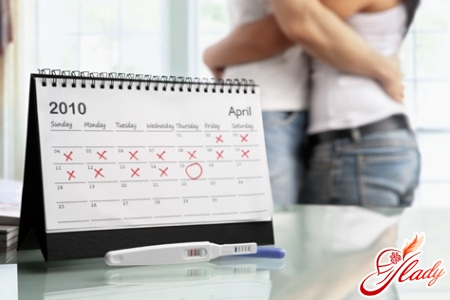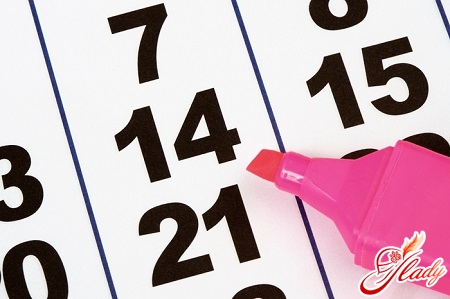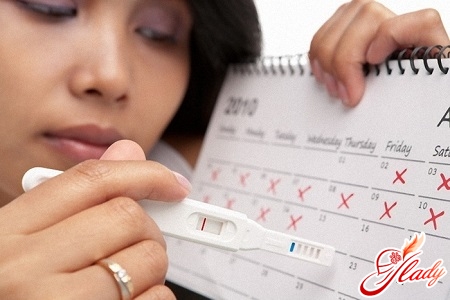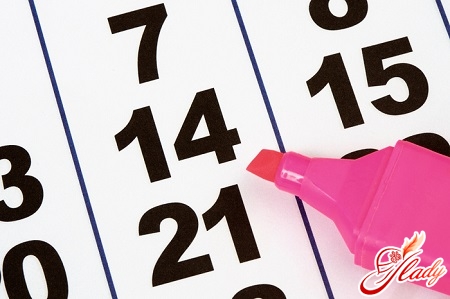
Every woman sooner or later asks herself this questionquestion: how to calculate the day of ovulation? And if for some it is the hope of seeing the cherished two stripes on the test, then others, on the contrary, use this knowledge as one of the methods of contraception. Therefore, you should have a clear understanding of this physiological process. Ovulation is the maturation of the egg and its release into the fallopian tubes, where it awaits fertilization. Like any capricious girl, she does not wait long. According to doctors, the mature egg is ready for fertilization for about a day and if this does not happen, it dies. And this process will be repeated only in the next menstrual cycle.
What is ovulation?
This is how nature intended it, only once a monthconception can occur. Therefore, couples who are actively planning to become parents are very careful about the accuracy of calculating the day of ovulation. But we should not forget that the human body is not a clock where everything goes with maximum precision, our mechanism is much more complex than a watch. An absolutely healthy woman who does not have any gynecological problems has only 10 ovulations per year, that is, there are cycles when there is no ovulation at all. At the same time, women who are not planning a pregnancy should not forget that sperm are more resilient than an egg, they retain their ability to fertilize for up to several days. Therefore, unprotected sexual intercourse that occurs even a few days before the day X can lead to conception. In addition, not every healthy woman has an absolutely regular menstrual cycle, which means that determining the cherished day becomes more difficult. Therefore, you should know how to calculate the day of ovulation.
Counting the days of the calendar
One of the simplest methods of determiningThe most favorable day for conception is the so-called calendar method. Its essence is that you can calculate the day of possible ovulation. To do this, you only need to know the length of the menstrual cycle. Ovulation occurs 14 days before menstruation. This does not depend on the length of the cycle. Only the first phase of the cycle (before ovulation) can change, but the second is already constant. This method is great for women who have a regular menstrual cycle, which is called "day by day". They know the exact day of the beginning of the next period, simply subtract 14 from it and get the very date of the most likely conception. And then each one acts depending on the goal pursued. Some lead an active sexual life during this period, while others, on the contrary, abstain from sexual intercourse or use other methods of protection against unwanted pregnancy. Let's look at an example of how to calculate this. Let's take the accepted cycle of 28 days. Let's say your last period started on January 9, and your next menstrual cycle will start on February 6. Subtract 14 from this date, and you get that the day of ovulation is January 23, so conception can occur during this period. There are now many ready-made calculators that allow you to calculate ovulation online. You just need to enter the length of your cycle, and they calculate everything else themselves and give you a ready-made result. It's a very simple and convenient method, but you shouldn't trust it completely, since ovulation can shift under the influence of external factors, such as stress, colds, overwork, and hormonal changes.
Signs of ovulation and ways to determine it
- The testing should be started 17 days before the next monthly period. If the cycle is irregular, select the shortest in the last six months and focus on it.
- Testing is better in the morning and in the evening, since the LH is at the peak of only about 24 hours and there is a high probability of missing the moment.
- Choose the same time in the interval from 10 am to 8 pm.
- Do not use the first morning urine.
- 1-3 hours before testing, reduce fluid intake.
- Be sure to follow all the manufacturer's recommendations.
Calculating the day of expected ovulation,Women should understand that a huge number of different processes occur in the body, interconnected with each other. It is impossible to fit them all into an exact calculation formula, especially under the influence of constantly changing external factors. Remember this when calculating ovulation using the calendar. I would like to note that you should not limit yourself to one method of calculating ovulation. Only in combination will all methods help determine the "peak" days. Do not forget that in some cycles ovulation may not occur at all. This does not mean its absence in general. Do not immediately panic. Pay attention to your own feelings, observe yourself and your body, because it itself tells you about the processes occurring in it. Be sure to make a graph of periodically recurring changes and signs, and over time you will learn to understand their meaning. Be patient, follow the recommendations given, and you will understand that it is not so difficult to catch the moment favorable for conception.









